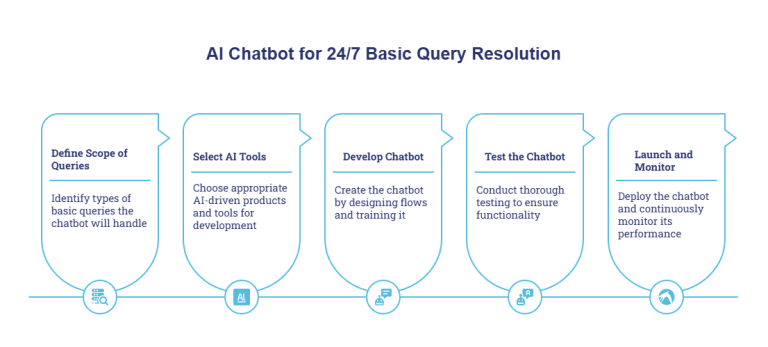
AI Chatbot Workflow for 24/7 Customer Query Resolution
AI chatbot workflow enhances customer service with 24/7 query resolution improves accessibility and reduces human agent workload for efficient support
Category: AI Accessibility Tools
Industry: Customer Service

AI Chatbot for 24/7 Basic Query Resolution
1. Workflow Overview
This workflow outlines the process for implementing an AI chatbot designed to provide 24/7 resolution for basic customer queries in the context of AI Accessibility Tools for Customer Service.
2. Objectives
- Enhance customer service accessibility.
- Provide immediate responses to common queries.
- Reduce the workload on human agents.
3. Implementation Steps
3.1 Define Scope of Queries
Identify the types of basic queries the chatbot will handle, such as:
- Order status inquiries
- Product information
- Account management
3.2 Select AI Tools
Choose appropriate AI-driven products and tools for chatbot development:
- Natural Language Processing (NLP): Tools like Google Dialogflow or IBM Watson Assistant can be utilized to understand and process customer queries.
- Machine Learning: Implement machine learning algorithms to improve response accuracy over time.
- Integration Platforms: Use platforms like Zapier or Make to connect the chatbot with existing customer service systems.
3.3 Develop Chatbot
Follow these sub-steps to create the chatbot:
- Design conversation flows to anticipate customer needs.
- Train the chatbot using historical data from customer interactions.
- Implement AI-driven tools for real-time learning and adaptation.
3.4 Test the Chatbot
Conduct thorough testing to ensure functionality:
- Simulate various customer interactions.
- Gather feedback from internal stakeholders.
- Refine responses based on testing outcomes.
3.5 Launch and Monitor
Deploy the chatbot and continuously monitor its performance:
- Track key performance indicators (KPIs) such as response time and customer satisfaction.
- Utilize analytics tools to assess the effectiveness of the chatbot.
- Regularly update the chatbot’s knowledge base with new information and FAQs.
4. Continuous Improvement
Establish a feedback loop for ongoing enhancements:
- Collect user feedback to identify areas for improvement.
- Regularly update the AI model based on new data and customer interactions.
- Implement A/B testing to evaluate different approaches and optimize performance.
5. Conclusion
By following this workflow, organizations can successfully implement an AI chatbot that enhances customer service accessibility and efficiency, ensuring that basic queries are resolved promptly and accurately.
Keyword: AI chatbot for customer service
